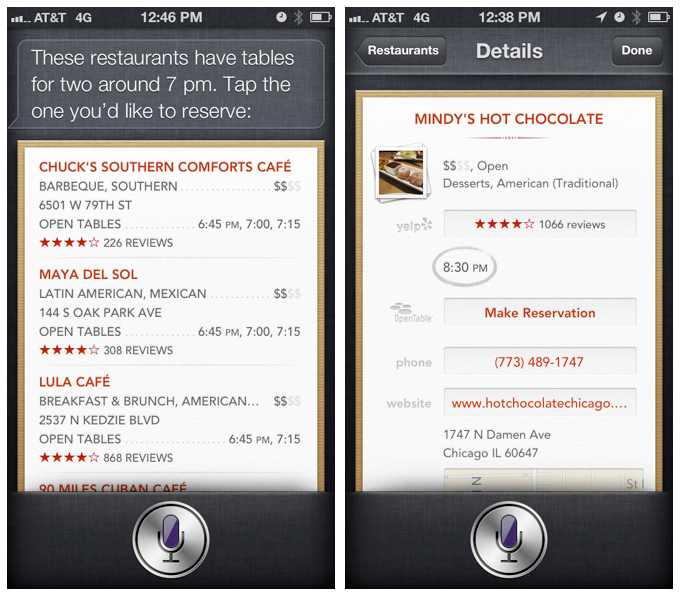By now you know how important search marketing can be for a business. It has evolved greatly since the days of the Alta Vista search engine and Netscape browser. Google, Bing and Yahoo are battling it out for market share of this billion-dollar industry. Competition brings out the best in everyone, which means these three giants continue to evolve. That has led to a focus on the user experience. And when it comes to search results, it means they are doing everything in their power to offer the most relevant results.

Nowadays, you have voice command features like Siri on smart phones that go out and perform the searches then sort them based on reviews and where you are located.
Local Queries: Then and Now
In the beginning of 2009, localized listings weren’t even a part of the search results pages. This meant that if you wanted to find things around you, you would have added your city and/or state to the end of the search query. For example, I would have typed in “Mexican food restaurants Scottsdale, AZ.” This is still a common practice today, but the need for that is declining as search results are automatically giving you those localized results.
This Shift to Localized Results
In June 2010, nearly 20 percent of all searches performed had local intent. Now, even nationally focused keywords are starting to provide localized results. This can hurt those companies that sell to industries or consumers on a national level, because those nationally focused keywords are giving localized results.
There is a strong benefit to local companies, because it allows you to target very competitive keywords nationally and still gain traction with them locally. My digital marketing agency ranks really well for “SEO Services” or “SEO Company” when searches are performed in our state. This has given us plenty of great opportunities.
The Power of Mobile
Searches are happening more and more frequently on mobile devices. In fact, a recent study reported that 25 percent of people search exclusively on their mobile device. So not only do you need to worry about being listed in those results, but you also need to make sure that you have a mobile version of your website to make it easier to use with a smart phone. This has proven to lead to higher conversion rates on your website and is more likely to lead to in-store visits if you are a retailer.
Look at www.starbucks.com on your smart phone, look at it on your tablet and again in your browser. Try resizing your browser. See how the website reconfigures itself based on the size? This is called responsive web design, and it makes the customer experience great.
How to Improve Your Rankings
So you know the importance of your website ranking, but how do you actually get there? Well, if you are a company that provides services or products on a national level, you need all the basic SEO elements in place. These include:
- A properly optimized website with keywords in the title, meta description (which is what shows as your description in search results) and great content.
- Relevant links pointing to your website from a variety of credible sources.
- Social signals that show people are talking about you or at least engaging with you.
- A focus on creating quality content through blogging, infographics, etc.
This will help your results even for locally focused clients, but if you are a nationally focused company, you will still have a chance of populating search results even when the searches are being performed in other cities and states.
How to Improve Your Local Listing Results
Having the strong SEO foundation above all will be a major boost for your local listings. However, Google is also looking for several other factors when determining which companies get the bubble marker in their search results. Here is a list of some of the important factors:
-
Citations
Citations are a big signal to Google that you are a legitimate business. They are like links in the SEO world, with some important differences. These citations must have the same name, address and phone number (NAP) across multiple sources like SuperPages, Yellow Pages, Yelp, Kudzu, Merchant Circle, etc. You can use a service like Localeze or Yext to help manage multiple listings all at once.
-
Location
Where your business is located in comparison to where the search is being performed. There is nothing you can really do about this, but it is important to know that this is a factor in how you come up in results.
-
Reviews
Encourage satisfied customers to leave positive reviews. There is the old saying that someone who is unhappy will tell 10 people. This was based off of a report in 1981 before the world of social media. It’s possible to tell millions nowadays. That means reviews are already set up to be skewed towards the negative side. You need to be proactive in getting positive reviews.
To see a very comprehensive list of local ranking factors, visit David Mihm’s great research on this topic.
Where it’s Going From Here
Local search is here to stay. You MUST adapt your marketing strategies for this. It is in your best interest to be found locally when people are looking for products/services and to have a website that gives users a great experience that will lead to repeat visits and sales.

